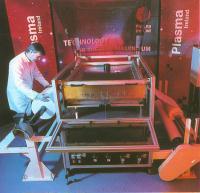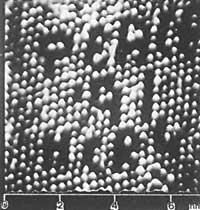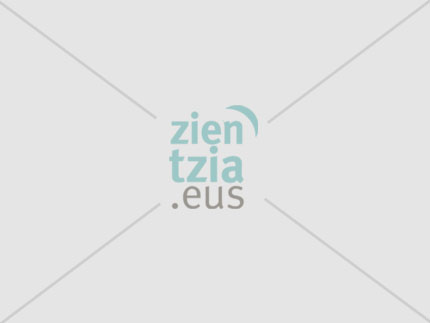Use of plasma in the textile industry
2000/01/18 Roa Zubia, Guillermo - Elhuyar Zientzia
Low pressure and temperature plasma technology began to be used in the 1960s in industrial applications linked to electronics. Twenty years later its use was extended in new fields, especially in metal products and polymers. Now we want to exploit the plasmas in the textile industry.
The Institute of Fibre and Polymer Technology Research (IFP) in Sweden and Plasma Ireland have launched the Plasmatex project. It is about demonstrating the usefulness of a new technology for the future: plasma treatment for the textile industry under atmospheric pressure.

Liquid products predominate in textile treatments. Liquids normally enter all holes between the fibers of the tissue. The reactions produced by the plasmas occur only on the surfaces of the tissue. In general, they only affect a thin layer of 100 angstromas (an angstrom equals ten thousand of a micron, measured approximately the size of an atom).
Attractive applications
Surface action can be a very interesting feature. In addition, it is not only useful in artificial tissues, but also helps in the processes of making natural tissues without producing effects on the internal structure. For example, the skin of a suit can be permeable, waterproof or fireproof. Artificial fiber dyeing is not a simple process, but good plasma can greatly improve pigment fixation. Finally, plasmas containing fluoride can improve the properties of tissues used in medicine. These tissues, when used in transplants, must have high biocompatibility with both organs and blood (hemocompatibility).
Another important advantage over liquids is that smaller amounts are needed to work. Therefore, it generates less pollution. In addition, it includes the reduction of waste treatments and the lack of need for drying the product. Plasma processes are dry, clean and do not consume as much energy.
With so many advantages, why have plasmas not been used before in the textile industry? In the words of Roshan Shishoo, IFP Director: "Although these significant advantages have been demonstrated in the laboratory, plasma has not been successful in the textile sector, since it has a characteristic that does not correspond to the wholesale production of the industry. All the plasma technology developed so far is based on its characteristics at low pressures." Expensive tools under working conditions are essential.
This is the challenge that Plasma Ireland wants to overcome. To do this, it is working on the new generation of plasma systems under atmospheric pressure. The new technologies being developed produce results similar to those of low pressure. It is unparalleled throughout Europe. The main objective of the Plasmatex project is the application of this technology in the textile industry. In addition, the companies Plasma Ireland and IFP have incorporated a new research center, the physics laboratory of Queen's University in Belfast, a web processing company dedicated to the manufacture of textile machines and six companies dedicated to the manufacture of garments to work on the Plasmatex project.
Already working
Three prototypes developed by Plasma Ireland in production chains from different companies have been launched to facilitate research. The first is owned by IFP and is also available for Swedish companies. The second is in Germany, in the company Kirchhoff and the third is testing the British group Scapa. Only two systems using atmospheric pressure plasma are present worldwide in the development process, one in the United States and one in Japan. "However, there is still no system of great application in the textile sector," says Tony Herbert, project manager for Plasma Ireland. "Therefore, we have very attractive options."

Gai honi buruzko eduki gehiago
Elhuyarrek garatutako teknologia





